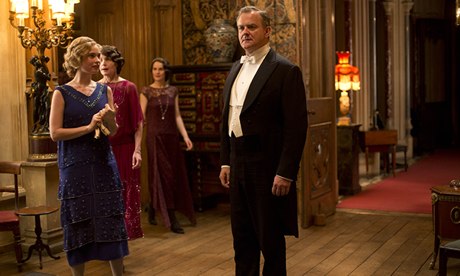It will feature the first Manhattan outpost of
Toby’s Estate Coffee, the Williamsburg, Brooklyn, mainstay, and a bookstore operated by
the Strand, the eclectic New York literary shop, with more than 700 titles. Club Monaco’s specialty Manhattan store will also include a 1920s haberdashery display within the men’s store, a conservatory with a barrel-vaulted ceiling, and decorative hints reminiscent of the retailing era when the neighborhood was known as
Ladies’ Mile.
“We wanted to create a space where you don’t just come to buy a sweater, but are getting an education on art and culture,” said Allison Greenberg, Club Monaco’s director of marketing and communications. “You can have a cup of coffee or sit in the library and read a great book that is relevant to the Flatiron district.”
The 20,000-square-foot store, a renovation and expansion of a previous Club Monaco location, is part of a larger strategy to expand the brand. The clothing retailer has been branching into accessories, including a recent partnership with Jane Mayle, the handbag designer. This summer, it produced its first shoe line.
In addition, Club Monaco recently opened a shop on Bleecker Street, is converting its location on Prince Street in SoHo to a stand-alone men’s store and is opening a second women’s location on Broadway, also in SoHo. It recently opened its first free-standing shop in London, with plans to add more locations next year, and is renovating its stores in Seoul, South Korea, and Hong Kong.
Club Monaco is not the first retailer to try to drum up foot traffic by teaming up with ancillary businesses. This year, Rag & Bone opened in the meatpacking district with a beverage station operated by Jack’s Stir Brew Coffee, and Shinola in TriBeCa shares its space with the Smile cafe.
The design at the Fifth Avenue Club Monaco, which was overseen by an in-house team, drew inspiration from the neighborhood’s past, when department stores like B. Altman and Best & Company were popular shopping destinations. It has a mostly white palette, with Venatino marble flooring and Ionic columns on the ground floor. Floor-to-ceiling drapery, vintage furniture and silk rugs adorn the rooms.
The bookstore and coffee shop are efforts “to bring our blog to life,” said Ms. Greenberg, referring to
Culture Club, which was started two years ago and has more than 260,000 followers.
“We wanted to reinforce our status as a true lifestyle destination,” she said.
Club Monaco teamed up with the Strand, which opened in 1927 and is famed for having 18 miles of used and new books, “because it is iconic to New York City,” Ms. Greenberg said. The bookstore, whose other locations are the main store on Broadway near Union Square and a kiosk that abuts Central Park, will have 2,500 books jointly selected by Club Monaco and the Strand. Tucked inside the store’s so-called library, the bookstore will have armchairs for customers to peruse the offerings, and it will hold events like authors’ readings.
As for Toby’s Estate Coffee, “we are big fans of the brand internally and we wanted to offer coffee — who doesn’t want coffee on a Sunday afternoon as they shop?” Ms. Greenberg said.
Toby’s, originally from Australia, had been looking for a Manhattan location for nine months “when we got a call from Club Monaco saying they had this opportunity for us,” said Amber Jacobsen, one of the owners.
“Here at Toby’s, we don’t want to be a chain retail store and we are not looking to replicate what we have in Brooklyn,” she said.
The Brooklyn location includes a roasting plant and a slow bar, where coffee is allowed to brew for several minutes before being poured. The Club Monaco site in Manhattan will offer a slow bar, but will not have a roastery. Its décor, designed by Club Monaco, is intended to match the store’s palette, with custom-made espresso machines that are powder-coated white with walnut wood paneling.
Retailing experts see these partnerships as a way for the store to set itself apart from competitors by attracting a variety of customers. “Club Monaco is starting to follow trends that are emerging from more specialty brands,” said Lisa Weiss, the owner of a wholesale showroom and a former retailer. “They typically compete against the likes of the Gap and J. Crew, so this is a way for them to differentiate themselves.”
Also, retail rents in the neighborhood have risen rapidly, and sharing a space can offset some of those costs. Asking rents in the Flatiron district now run as much as $500 a square foot, up from just $175 a square foot five years ago, said Joanne Podell, a vice chairwoman at Cushman & Wakefield.
While Club Monaco declined to discuss the specifics of its lease or how the deals with the Strand and Toby’s were structured, typically stores like Club Monaco will be paid some compensation. “Most retailers are trying to be very effective in their use of space right now, especially as rents continue to rise,” Ms. Podell said.
But there are risks inherent in separate companies’ sharing a common retail space, cautioned Robert Cohen, a broker at RKF, a retailing real estate brokerage firm. “Over the life of a lease, say 10 to 15 years,” he said, “a lot of things can happen.”
Still, more retailers are betting that the strategy will pay off. “Right after the recession, everyone was scaling back and going to smaller footprints,” Mr. Cohen said. “Now, we are seeing the opposite, that companies like Club Monaco are willing to take bigger spaces, but they have to do something extra, something interesting to entice consumers to go in.”



More on my 'Little Libraries' series. I am fascinated on how widely this grassroots initiative is spreading throughout the world. I wish my town had one!